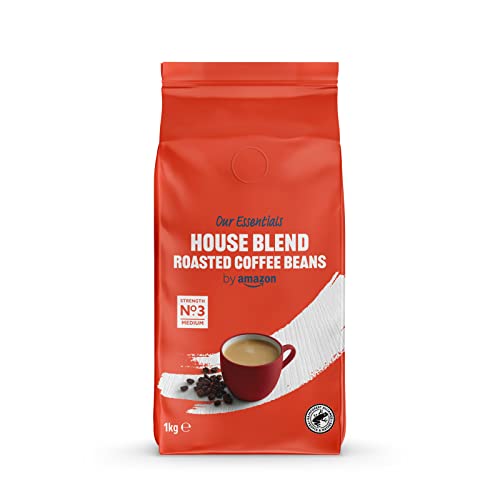See What Coffee 1kg Tricks The Celebs Are Utilizing
페이지 정보
작성자 Willard 작성일24-11-26 01:42 조회3회 댓글0건본문
Why Buy 1kg arabica coffee beans of Coffee in Bulk?
A cup of good coffee can be a wonderful way to begin your day. It's also healthy. Studies have proven that moderate coffee drinking is associated with reduced risk of Type 2 diabetes, Parkinson's disease and liver disorders.
 How many cups of beans can you make from one kilogram of beans?
How many cups of beans can you make from one kilogram of beans?
Price
A kilogram of coffee beans is enough to make several cups of freshly roasted and ground coffee. It is available in a variety, including single-origin beans or blends. Blends combine different types to create a distinctive taste profile. Single-origin coffee beans are sourced from one specific region or country. The cost per kilogram of coffee can vary greatly based on the kind of bean and the roasting method employed.
Buying coffee beans in bulk is more economical. It's also green since it reduces packaging waste. Coffee grounds, which are a by-product from the process of brewing coffee, could be composted. Purchasing coffee in bulk is also a great option to buy your favorite beans and save money over the course of time.
It is crucial to keep in mind that the price of a kilogram of coffee beans does not include the price of transportation and shipping. These expenses can be significant and should be considered when planning a wholesale order. You can estimate the total production costs by using an online calculator if you're not sure how much your coffee will cost.
The cost of a kilogram of coffee beans is based on the quality and size as well as the cost of processing and shipping. Additionally, it is important to consider the cost of any unforeseen expenses, like unexpected milling defects or the removal of defective beans from the shipment. This could result in reduction in the overall weight, which can directly impact the cost per kilo.
It is also important to think about the impact of tariffs and taxes on the price of one kilogram of coffee beans. In general the higher the taxes and tariffs are, the more expensive the cost of the coffee will be. There are exceptions to this rule, and it's important to study each tariff prior to making a decision on a price. It's also a good idea to review your prices every six months and communicate these changes with your customers.
Taste
Buy in bulk to reduce packaging waste and keeps your coffee beans fresher for longer. It also means that you are able to experiment with different grind sizes and brewing methods which can enhance the enjoyment of your daily cup. The ability to experiment with different grinds will eventually result in a certain amount of coffee waste. For example the grounds that you spill when using a cafétiere or the waste that comes when you dial in a new grind. This will affect the number of cups you can make from 1kg coffee beans uk of coffee and is an important aspect to be considered when calculating cup counts. But don't worry, coffee grinds can be composted to great effect!
Environment
Coffee is a well-loved drink across the globe, but its production has environmental impacts. For instance, the production of coffee is often associated with the destruction of forests. Farmers must clear their land in order to plant coffee trees. These are often planted on fragile ecosystems in tropical regions. This can result in habitat loss, loss of biodiversity and even conflict between humans. In addition, coffee is an extremely volatile commodity that can be unstable and volatile, leading to wild price fluctuations. The ten largest global roasters own a third of all beans roasted around the world. Farmers are left to compete to pay a tiny fraction of the retail price.
The biggest environmental impact associated with coffee is due to the process of growing and processing the bean itself. The majority of emissions are produced during the farming process, which requires the use of fertilisers as well as pesticides. Coffee trees also have to be regularly watered which can result in a large amount of carbon dioxide. The environmental impact of a cup of coffee depends on the location of its origin, and many companies are working to decrease the environmental impact of their coffee.
To calculate the carbon footprint, it is crucial to identify the functional units. The kilogram of green coffee bean is a common unit. This allows comparisons between various studies. A standardised methodology is also required to calculate the carbon footprint at each stage. There are a variety of methods exist but the most efficient method is to integrate sustainable practices at every stage of the supply chain.
The carbon footprint of coffee drinks can be drastically reduced by using less-dairy alternatives. A latte made with traditional coffee, a cappuccino, or a flat white made from sustainably grown beans will leave carbon footprints of 0.55, 0,34 and 0.41 kg CO2e.
The previous life cycle assessments (LCAs) have shown that the largest proportion of emissions are produced in the growing phase and this can be cut down by utilizing more efficient machinery and eliminating the use of pesticides. Additionally, international transportation can be reduced by using cargo ships instead of air transportation.
Stores
Purchasing coffee in larger quantities will help you save money over time while you enjoy high-quality coffee beans. This approach lets you control and manage the amount of Coffee 1Kg you consume during a particular month or throughout the year. It also means lower prices per cup of coffee beans as compared to smaller bags of 250g.
There are a few basic rules to follow when comes time to store your coffee beans. This will ensure that they taste their best. For example, storing your beans in cool dark locations will help them stay fresh and reduce the risk of spoilage. You should also avoid keeping your coffee in proximity to sources of heat or in direct sunlight. This will help protect your coffee bean 1kg from absorbing moisture that can alter its flavor.
Another key rule when keeping your coffee in storage is to ensure that the lid is closed. This is to prevent oxygen from entering the container and oxidising your coffee beans. The best method to prevent this is to use a vacuum-sealed coffee storage container like the Planetary Design Airscape or Fellow Atmos. These containers feature a valve that allows carbon dioxide to escape, while pushing the oxygen out of bag.
Many people are hesitant to buy coffee by the kilo because they are worried that their beans will become stale before they finish them. If you keep your coffee beans in a proper manner this shouldn't be an issue. If you store them correctly the kilogram of gorgeous coffee should be delicious until the very last cup.
 You can usually expect speciality coffee to remain fresh for several months, especially when stored in the proper conditions. Filter coffee that is stored properly should also produce great results, especially when it is ground right before brewing. This means that the coffee will be as fresh and delicious as it can be when it is brewed. This is based on a variety of aspects, including the type of brewer you use and your personal preferences for coffee.
You can usually expect speciality coffee to remain fresh for several months, especially when stored in the proper conditions. Filter coffee that is stored properly should also produce great results, especially when it is ground right before brewing. This means that the coffee will be as fresh and delicious as it can be when it is brewed. This is based on a variety of aspects, including the type of brewer you use and your personal preferences for coffee.
A cup of good coffee can be a wonderful way to begin your day. It's also healthy. Studies have proven that moderate coffee drinking is associated with reduced risk of Type 2 diabetes, Parkinson's disease and liver disorders.
 How many cups of beans can you make from one kilogram of beans?
How many cups of beans can you make from one kilogram of beans?Price
A kilogram of coffee beans is enough to make several cups of freshly roasted and ground coffee. It is available in a variety, including single-origin beans or blends. Blends combine different types to create a distinctive taste profile. Single-origin coffee beans are sourced from one specific region or country. The cost per kilogram of coffee can vary greatly based on the kind of bean and the roasting method employed.
Buying coffee beans in bulk is more economical. It's also green since it reduces packaging waste. Coffee grounds, which are a by-product from the process of brewing coffee, could be composted. Purchasing coffee in bulk is also a great option to buy your favorite beans and save money over the course of time.
It is crucial to keep in mind that the price of a kilogram of coffee beans does not include the price of transportation and shipping. These expenses can be significant and should be considered when planning a wholesale order. You can estimate the total production costs by using an online calculator if you're not sure how much your coffee will cost.
The cost of a kilogram of coffee beans is based on the quality and size as well as the cost of processing and shipping. Additionally, it is important to consider the cost of any unforeseen expenses, like unexpected milling defects or the removal of defective beans from the shipment. This could result in reduction in the overall weight, which can directly impact the cost per kilo.
It is also important to think about the impact of tariffs and taxes on the price of one kilogram of coffee beans. In general the higher the taxes and tariffs are, the more expensive the cost of the coffee will be. There are exceptions to this rule, and it's important to study each tariff prior to making a decision on a price. It's also a good idea to review your prices every six months and communicate these changes with your customers.
Taste
Buy in bulk to reduce packaging waste and keeps your coffee beans fresher for longer. It also means that you are able to experiment with different grind sizes and brewing methods which can enhance the enjoyment of your daily cup. The ability to experiment with different grinds will eventually result in a certain amount of coffee waste. For example the grounds that you spill when using a cafétiere or the waste that comes when you dial in a new grind. This will affect the number of cups you can make from 1kg coffee beans uk of coffee and is an important aspect to be considered when calculating cup counts. But don't worry, coffee grinds can be composted to great effect!
Environment
Coffee is a well-loved drink across the globe, but its production has environmental impacts. For instance, the production of coffee is often associated with the destruction of forests. Farmers must clear their land in order to plant coffee trees. These are often planted on fragile ecosystems in tropical regions. This can result in habitat loss, loss of biodiversity and even conflict between humans. In addition, coffee is an extremely volatile commodity that can be unstable and volatile, leading to wild price fluctuations. The ten largest global roasters own a third of all beans roasted around the world. Farmers are left to compete to pay a tiny fraction of the retail price.
The biggest environmental impact associated with coffee is due to the process of growing and processing the bean itself. The majority of emissions are produced during the farming process, which requires the use of fertilisers as well as pesticides. Coffee trees also have to be regularly watered which can result in a large amount of carbon dioxide. The environmental impact of a cup of coffee depends on the location of its origin, and many companies are working to decrease the environmental impact of their coffee.
To calculate the carbon footprint, it is crucial to identify the functional units. The kilogram of green coffee bean is a common unit. This allows comparisons between various studies. A standardised methodology is also required to calculate the carbon footprint at each stage. There are a variety of methods exist but the most efficient method is to integrate sustainable practices at every stage of the supply chain.
The carbon footprint of coffee drinks can be drastically reduced by using less-dairy alternatives. A latte made with traditional coffee, a cappuccino, or a flat white made from sustainably grown beans will leave carbon footprints of 0.55, 0,34 and 0.41 kg CO2e.
The previous life cycle assessments (LCAs) have shown that the largest proportion of emissions are produced in the growing phase and this can be cut down by utilizing more efficient machinery and eliminating the use of pesticides. Additionally, international transportation can be reduced by using cargo ships instead of air transportation.
Stores
Purchasing coffee in larger quantities will help you save money over time while you enjoy high-quality coffee beans. This approach lets you control and manage the amount of Coffee 1Kg you consume during a particular month or throughout the year. It also means lower prices per cup of coffee beans as compared to smaller bags of 250g.
There are a few basic rules to follow when comes time to store your coffee beans. This will ensure that they taste their best. For example, storing your beans in cool dark locations will help them stay fresh and reduce the risk of spoilage. You should also avoid keeping your coffee in proximity to sources of heat or in direct sunlight. This will help protect your coffee bean 1kg from absorbing moisture that can alter its flavor.
Another key rule when keeping your coffee in storage is to ensure that the lid is closed. This is to prevent oxygen from entering the container and oxidising your coffee beans. The best method to prevent this is to use a vacuum-sealed coffee storage container like the Planetary Design Airscape or Fellow Atmos. These containers feature a valve that allows carbon dioxide to escape, while pushing the oxygen out of bag.
Many people are hesitant to buy coffee by the kilo because they are worried that their beans will become stale before they finish them. If you keep your coffee beans in a proper manner this shouldn't be an issue. If you store them correctly the kilogram of gorgeous coffee should be delicious until the very last cup.
 You can usually expect speciality coffee to remain fresh for several months, especially when stored in the proper conditions. Filter coffee that is stored properly should also produce great results, especially when it is ground right before brewing. This means that the coffee will be as fresh and delicious as it can be when it is brewed. This is based on a variety of aspects, including the type of brewer you use and your personal preferences for coffee.
You can usually expect speciality coffee to remain fresh for several months, especially when stored in the proper conditions. Filter coffee that is stored properly should also produce great results, especially when it is ground right before brewing. This means that the coffee will be as fresh and delicious as it can be when it is brewed. This is based on a variety of aspects, including the type of brewer you use and your personal preferences for coffee.댓글목록
등록된 댓글이 없습니다.





